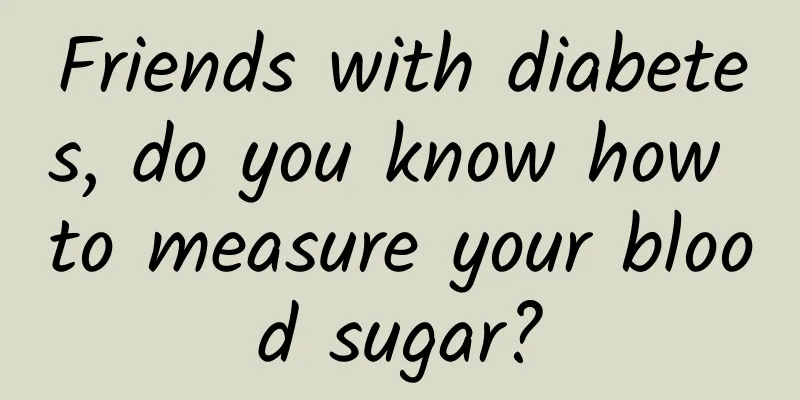10 symptoms of female ovulation

|
For adult women, during the ovulation period, they often show a variety of symptoms. During the ovulation period, women are relatively excited, with decreased appetite and more vigorous spirits. However, you must pay attention at this time. In fact, the resistance of women during the ovulation period is relatively low. Some women will also have a small amount of uterine bleeding, which will cause lower abdominal pain, increased body temperature, increased vaginal secretions, etc. 1. Decreased appetite: Studies have shown that women eat the least during their ovulation period. Experts point out that this is the result of human natural instincts that have been preserved to this day - female animals during ovulation will focus more on finding mates rather than finding food. 2. Energetic: This is also a natural instinct inherited from humans. In order to successfully attract the opposite sex, women during ovulation will become energetic and love to show themselves. 3. Decreased resistance: During ovulation, a woman's vaginal mucus becomes thinner, allowing sperm to pass more easily and increasing the chances of successful conception. At the same time, a woman's nasal mucus also decreases, increasing the chances of bacteria invading the human circulatory system. 4. A small amount of uterine bleeding: Since the ovaries not only have the function of ovulation, but also control the secretion of female endocrine hormones, the fluctuation of estrogen secretion in the body before and after ovulation will cause a small amount of uterine bleeding, which is called ovulation bleeding. This is another sign of ovulation, which some women may mistake for menstrual irregularities. 5. Mild pain in one side of the lower abdomen: The mature egg is released from the surface of the ovary and breaks through the follicle that covers the surface of the egg. When the egg is released, a small amount of fluid in the follicle will flow into the lowest part of the pelvic cavity; sometimes there will be a small amount of bleeding at the site where the egg is released from the ovary during female ovulation. Therefore, some women during ovulation may feel a slight falling sensation in the anus, and may also feel slight pain in one side of the lower abdomen. If you pay close attention, the same female ovulation symptoms will appear in the other lower abdomen next month, and these painful female ovulation symptoms will disappear after about a few hours. 6. Changes in body temperature: After ovulation, due to the secretion of progesterone, the body temperature will rise slightly. If you can measure your basal body temperature every morning, you can find out your ovulation date based on the change of body temperature from low to slightly high. 7. High sexual desire: Generally speaking, women's sexual desire will be particularly strong during their ovulation period, which is a reflection of the fact that women's body signals that they want to get pregnant have reached their highest level. 8. Slight fever in the afternoon: Although some people do not test their basal body temperature, they will feel a little fever in the half month after ovulation, especially in the afternoon, and the fever will disappear after the menstruation comes. 9. Breast swelling or pain: In addition, many women will experience breast swelling or nipple pain during ovulation, and sometimes they can hardly touch their nipples. The breast symptoms may continue until the eve of the next menstrual period. 10. Changes in vaginal discharge: The most obvious sign that a woman feels when she ovulates is the change in vaginal secretions. Symptoms of female ovulation: Vaginal discharge is scanty, thick, and opaque during the first half of the menstrual cycle. Female ovulation symptoms: As ovulation approaches, vaginal discharge gradually increases and becomes thin and milky white. Symptoms of female ovulation: During the ovulation period, the amount of secretions increases significantly, and is watery, transparent and clear. Women will feel their vulva is wet and slippery, and when wiping with toilet paper, there will be egg white-like strips of mucus. Symptoms of female ovulation: This vaginal discharge lasts for 2 to 3 days, and this period is the time when women are most likely to get pregnant. |
<<: What are the symptoms of severe spleen deficiency in women?
>>: What are the symptoms of pelvic inflammatory disease?
Recommend
What should I do if my pubic hair has small bumps and it itches?
In summer, various skin diseases are more common,...
Kenshoo: Mobile ad revenue now accounts for a large portion of Facebook's global ad revenue
Facebook charges more for mobile ad clicks From b...
What are the benefits of having a second child?
my country's birth policy has been relaxed fo...
How big is the baby in the 34th week of pregnancy?
Although women feel happy and excited after becom...
What is vulvitis? Five points to tell you
Nowadays, women are prone to vulvitis. Generally,...
Bright red bleeding after sex
Women may experience excessive vaginal bleeding a...
"Atrial fibrillation" should not be underestimated! 73-year-old aunt took medicine irregularly and almost caused trouble!
The 73-year-old aunt is a retired teacher. She we...
Can I get pregnant if I have sex three days after ovulation?
Nowadays, no matter what we do, we pay attention ...
Can I eat during pregnancy?
When a woman is pregnant, she will go to the hosp...
The harm of cyst on the right side of uterine appendage
Nowadays, more and more women are suffering from ...
Can I use erythromycin ointment for vulvar itching?
Vulvar itching is a common genital disease for ma...
Why do we eat mooncakes during the Mid-Autumn Festival? What are egg mooncakes?
Eating mooncakes during the Mid-Autumn Festival s...
Plastic surgery to repair inverted nipples
Inverted nipple is generally a congenital malform...
Why does leucorrhea smell like tofu dregs and have a fishy smell?
Nowadays, many female friends often stay up late ...
Pelvic fluid 1.2 cm
For most women, the term pelvic effusion is not u...









